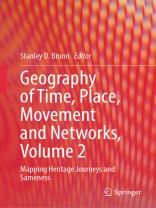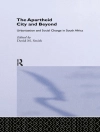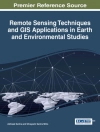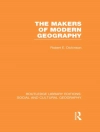This book explores journeys in a time context with a focus on places, place meanings, and landscapes. Whether the journey relates to ancient or modern trails, roads, or railroads, or a historical or contemporary pilgrimage or a tourist venture in social contexts, the book addresses the importance of places and environmental settings, whereby time itself is described and defined in multiple contexts. The chapters discuss among others archaeological and pre-history settings, tourism settings, and heritage events, as well as regional and transnational migration routes and those used by historical nomadic cultures and postmodern nomads. Some time and place journeys are fluid and dynamic and re-interpreted while for others there is much “sameness” in the visible landscapes. Retaining the past and reconstructing the past are both journeys. That sameness concept is also applied to cultural and political worlds where there is little progress or reform to address social welfare and empowerment. This book opens the door for exploring shallow and deep journeys by those in the humanities and social sciences at local, national, and regional scales.
Inhaltsverzeichnis
1. US 101: From El Camino Real to the Twilight of Empire (John Bowen).- 2. Myth-Making Journeys on the Trans-Siberian Railway (Kathleen Braden).- 3. Sameness within the Amish Settlements in Wisconsin (John A. Cross).- 4. Heritage Tourism, Education Challenges, and Representations of the Past: Insights from the United Arab Emirates (Adriaan De Man and Filareti Kotsi).- 5. Peasant Livelihoods and Geographies of Sameness in the Alexander Skutch Biological Corridor, Costa Rica (Edgar Espinoza-Cisneros and Felipe Montoya-Greenheck).- 6. Maine Waterpower Mill Hamlets: Frozen in Time or Slowly Melting? (Paul B. Frederic and Matthew Mc Court).- 7. Journeys of Hope: Radical Heritage Transformation at South Africa’s Oldest Surviving Colonial Edifice, The Castle of Good Hope, Cape Town (Calvyn T. Gilfellan).- 8. Kazakh Nomads: Thousand-Year Routes, Environment and Political Oppression (Nygmet Ibadildin).- 9. The Ideal Roman Landscape of the Appian Way (Mauro De Nardis).- 10. Amateur Archaeology and the Mystery of Daniel Boone’s Footprints: Persistent Myths Collide with Native American Indian Archaeology (Greg Orth).- 11. After the End of the Journey: The Evolution of the Cherokee Nation after the Trail of Tears (Fred M. Shelley).- 12. The More They Stay the Same: White Educational Preservation in Post-Integration Mississippi (P. Caleb Smith).- 13. Ghost Towns, Landscapes of Abandonment and Journeys Forward (Dallen J. Timothy).- 14. Exploring the Spatial and Social Journeys of the Roma Ghettoized Structures (RGS) in Northwestern Bulgaria (Kaloyan Tsvetkov and Nadezhda Ilieva).- 15. Enduring Trinidad, Colorado: Visualizing Heritage on the Contemporary Landscape (William Wyckoff).- 16. Cultural Landscape Change and the Function of Hamlets in Southwest Wisconsin: Updating Trewartha’s Classic 1943 Study (Ezra Zeitler, Ryan Weichelt, Elli Swanson, and Carolyn Seger).
Über den Autor
Stanley D. Brunn, Ph.D., is Professor Emeritus in the Department of Geography at the University of Kentucky, Lexington, USA. His research interests cover a broad array of topics within urban geography, economic geography, social geography, information/communications geography, geotechnology and cyberspace, time-space intersections, law, political, and environmental geography, geographical future, as well as disciplinary history.












